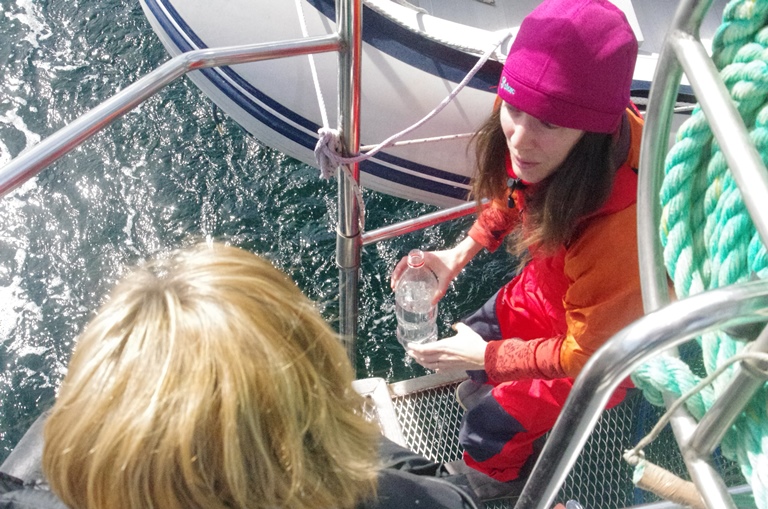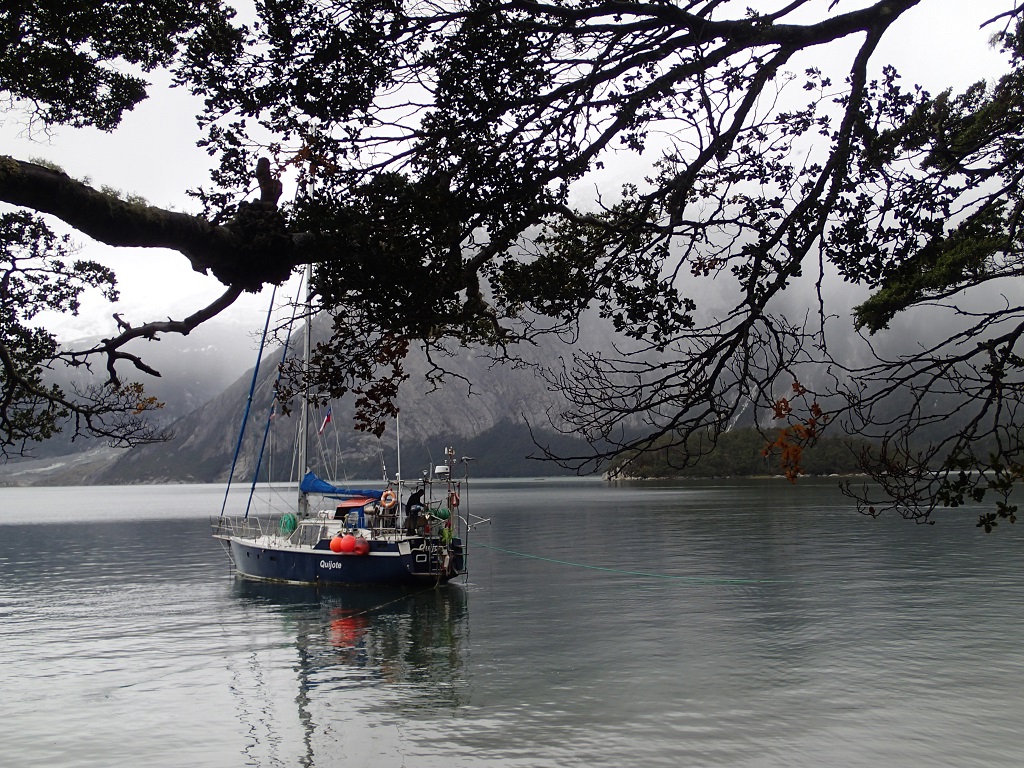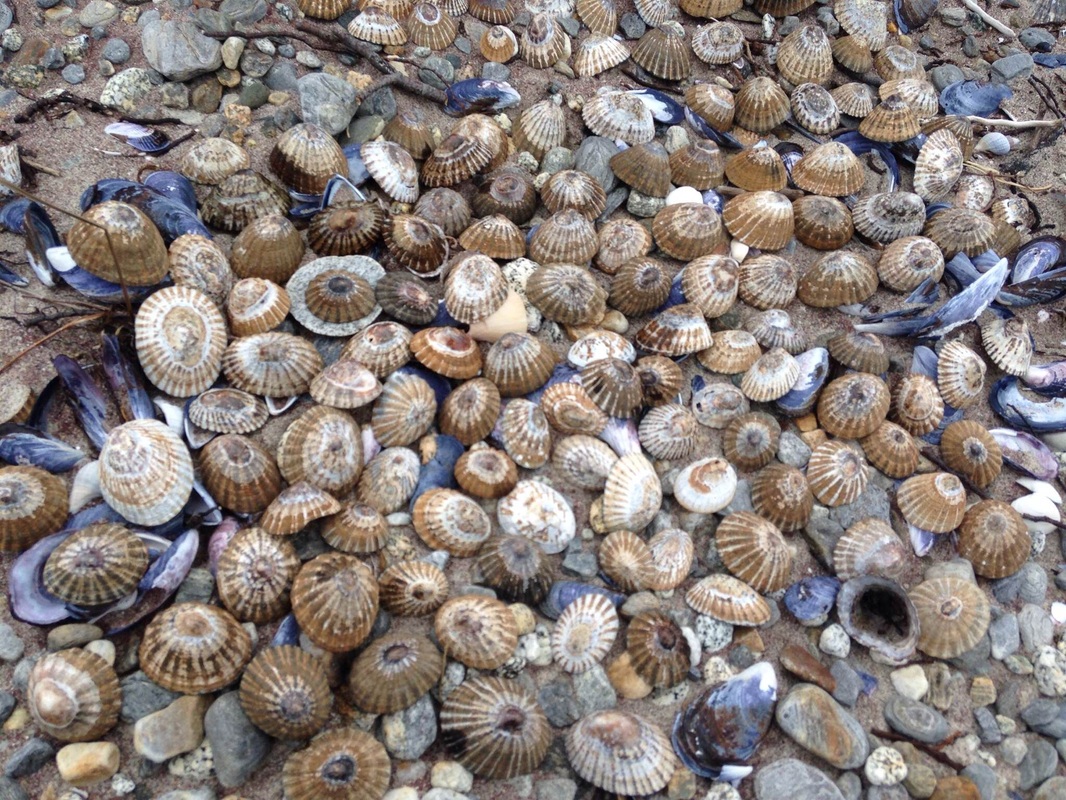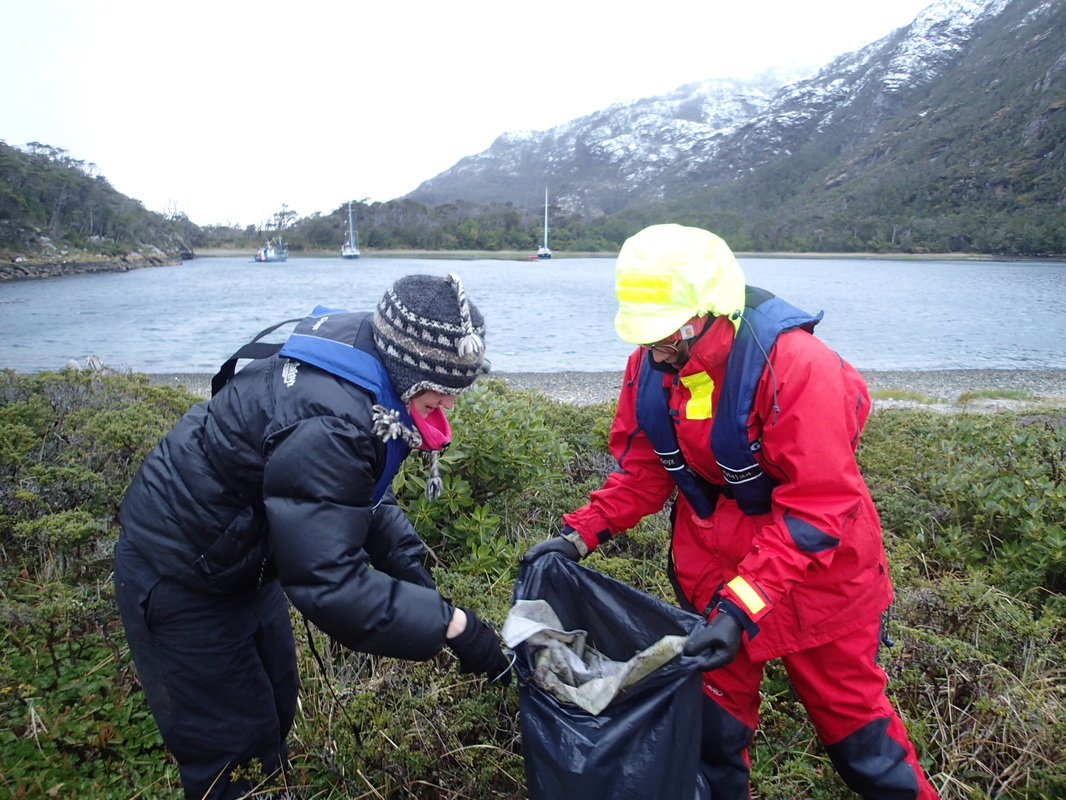Federico Guerrero and Laura Smith live on their sailboat, Quijote, at the end of the world in Ushuaia, Argentina. Federico built Quijote himself three years ago and now he and Laura use it to explore the wilderness in their backyard of Tierra del Fuego. Earlier this year they both sailed to Antarctica and worked with ASC to collect penguin and whale data. For this adventure they stayed a bit closer to home, exploring the Beagle Channel, navigating the same waters as Darwin and Fitz Roy.

Navigating the Beagle Channel. Photo by Laura Smith.
From Laura:
No turkey on Thanksgiving day – No problem. Argentine Beef will have to do! But Thanksgiving was not until day 6 of our 10 day adventure, so that story will have to wait. On day one, we set sail from our home in Ushuaia, Argeninta and sailed to Puerto Williams, Chile, a small navy town at the end of the world. There we stamped into Chile and our adventure started as we sailed towards the Fjords along the Beagle Channel.
Our plan was to sail during the day and tuck into different fjords at night – often in the shadow of looming glaciers. In addition to our sailing adventure, we teamed up with ASC to collect water samples for their microplastics project, an initiative to collect water samples around the world to better understand microplastic pollution in the world’s water. Microplastics are generally defined as pieces of plastic that are less than 5mm (and often much smaller) – basically small pieces that are nearly impossible for our eyes to see. Very little research has been done on microplastics, so ASC and their partners at the Marine Environmental Research Institute (MERI) are trying to understand the extent of the issue.

Laura collecting water samples aboard the Quijote. Photo by Laura Beagle.
Every other day I tried to collect my one liter sample of water. I asked myself where might be a good spot to sample. That cove? Near this glacier? Near the rocks? The first sample I took was right in the middle of the Beagle channel. How will samples from the end of the world fare? Would there be plastic here like there have been in most of the other samples collected so far? The next day, I took a sample in a fjord only 500m away from where a glacier was spilling into the water. Would this sample be contaminated too?

The Quijote anchored safely. Photo by Laura Smith.
By day six, our luck with decent weather ended and it was a race towards Calleta Olla (“Cooking pot cove”) before the wind got dangerously strong. Here in the fjords, an single anchor would not hold our boat for the night. Instead, we had to drop the anchor in the bow, and connect two lines from our stern to trees on the shore. Since the wind was blowing from the beach, once we dropped the anchor, Quijote would flip her stern exactly 180 degrees away from the beach if she and the wind had their way. I stood at the bow and dropped the anchor; Fede kept the engine astern fighting the wind. Our friends whizzed ashore in our small boat and with quick bowlines, attached a line to a tree. We were attached, but with one line Quijote’s stern kept trying to swing. For the next hour, with winches, our engine, and many calories devoted to hauling on lines, we battled the increasing wind to finally have a safe position for the night.
Thankfully, we had had the foresight to send my sister, Tesia, below to start dinner – Thanksgiving dinner. When we came below with the mix of salt water and fresh dripping from our noses, we found mashed potatoes, BEEF, cranberry sauce, and pumpkin pie ready on the table.

Limpet shells on the beach. Photo by Laura Smith.
The wind stayed at a minimum of thirty knots and gusted up to forty knots for the next three days. Large, wet snow flakes blew horizontally. During the days, we put on foul weather gear, added our ski goggles, and went ashore to walk on the beaches and climb the hills. Across from us, on a small spit, we discovered hundreds of limpet shells scattered over the sand. As our eyes searched for shells, our eyes also saw cardboard scraps and razors hiding the in the sand. At the end of the beach, where the forest meets the sea, we found two large white bags of trash. We decided that we must do a beach clean-up before we left this beautiful cove.
This trash on the beach made me think about the samples we were collecting during this trip. In this cove I collected two sets of samples: one in the middle of the cove and one near the shore. Unfortunately, with visible trash on the beach, I think these samples will be contaminated with microplastics too.

Beach cleanup. Photo by Laura Smith.
On the last evening we walked the beach with two large trash bags. Layers of trash played hide and seek in the low scrubby bushes of the beach. We overfilled two industrial sized bags with garbage. The other boat who had also taken shelter here thanked us for picking up the garbage, saying they had always meant to do it as well. The visible trash allowed us to share a bit about our micro trash we were looking for.
We felt a great deal of satisfaction as we ended our adventure as modern day Darwins. We had explored lands that he, too, had explored, and each of us studying problems of our day.
Keep up with ASC by subscribing to ASC’s blog, liking us on Facebook and following us on Twitter (@AdventurScience), Instagram (@AdventureScience) and Google+.





